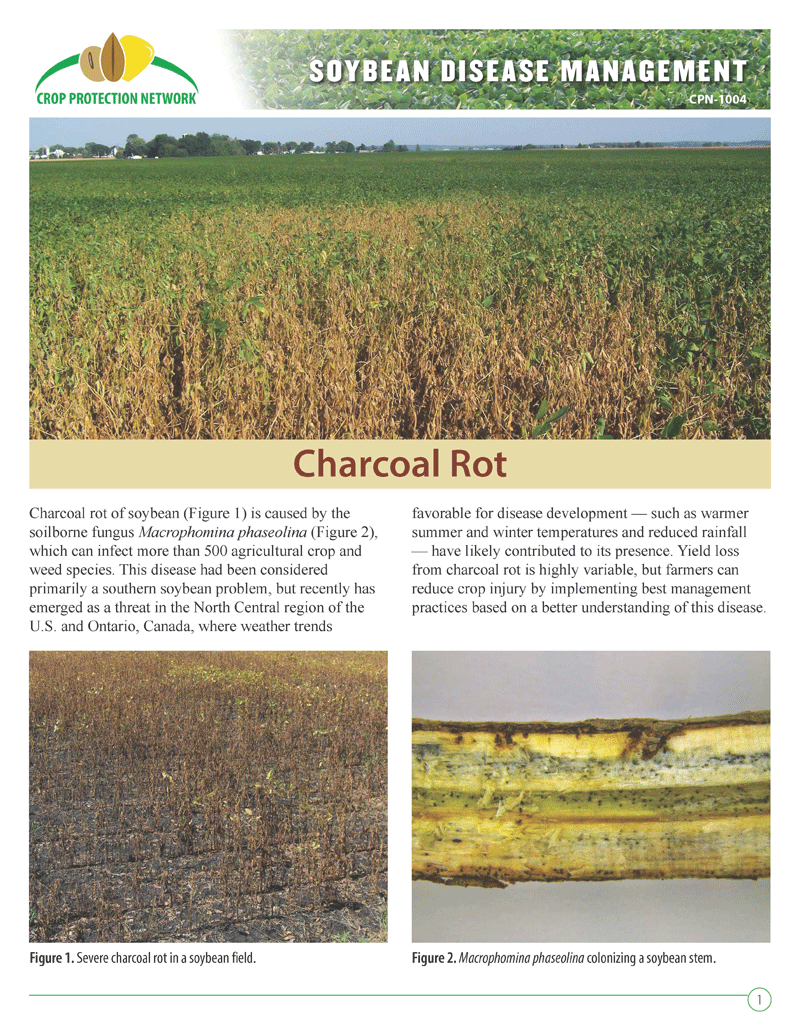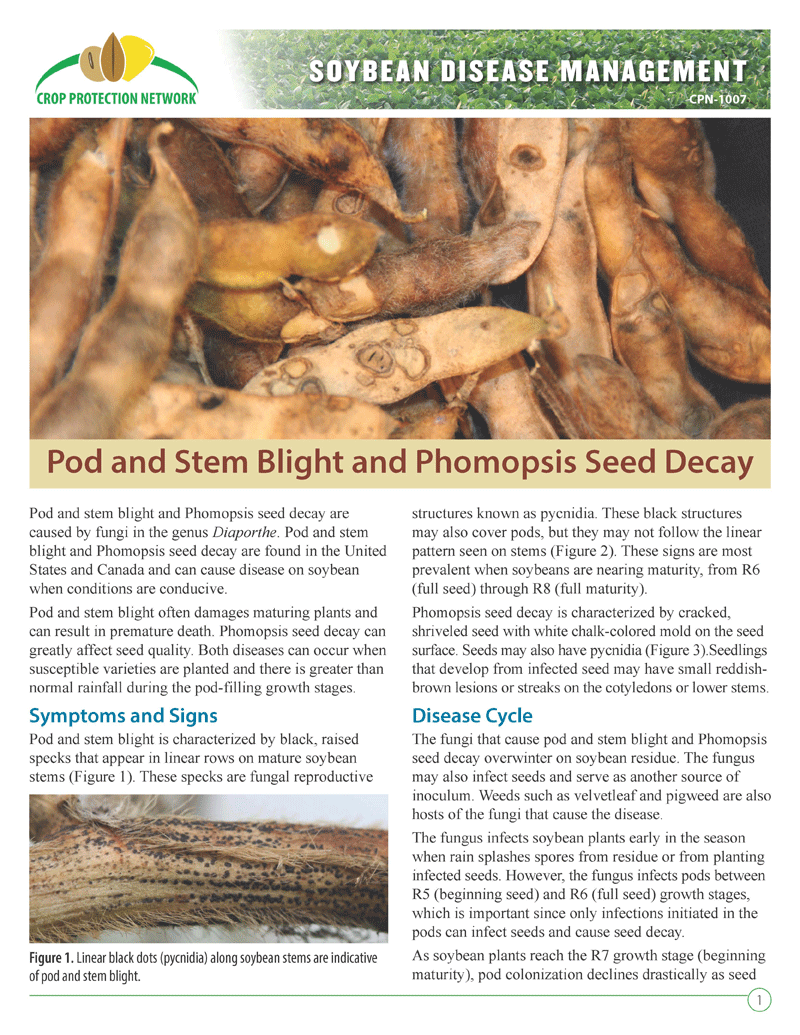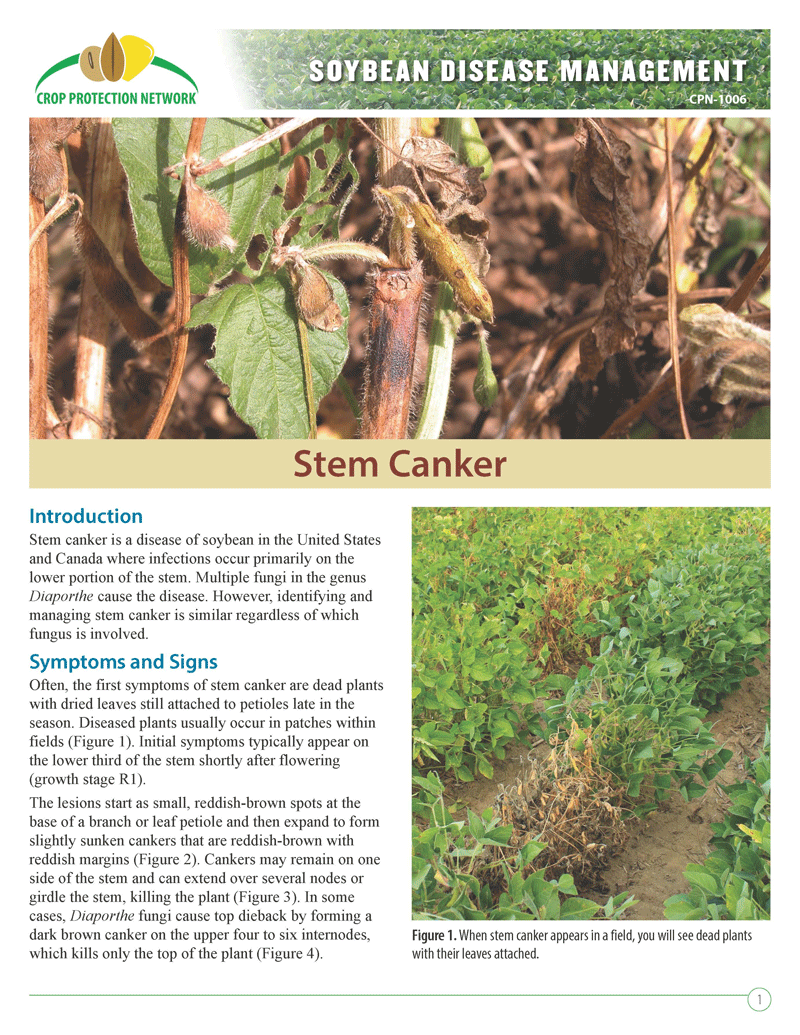Soybean disease management
NEW FIELD GUIDES AVAILABLE
THE CROP PROTECTION Network (CPN) has developed a series of Soybean Disease Management publications to educate growers in the U.S. and Canada about how to combat emerging disease problems in their fields. The Network is a multi-state and international collaboration of university and provincial extension specialists and public and private professionals that provides unbiased, research-based information to farmers and agricultural personnel.
Albert Tenuta, field crop pathologist with the Ontario Ministry of Agriculture, Food and Rural Affairs participated in the series as an author and reviewer.
“Support through Grain Farmers of Ontario has been critical to Ontario’s involvement in the Crop Protection Network,” says Tenuta. The CPN?avoids duplicating materials and provides a consistent approach to disease IPM management for Ontario and northern U.S. soybean producers — one voice, one message!”
The first three of the Soybean Disease Management guides are currently available for download at www.gfo.ca/ Production.aspx and include charcoal rot, pod and stem blight and phomopsis seed decay, and stem canker. Highlights of the information contained in these reports are summarized here.
 CHARCOAL ROT
CHARCOAL ROT
Charcoal rot of soybeans has recently emerged as a threat in the North Central region of the U.S. and in Ontario where warmer summer and winter temperatures, along with reduced rainfall, have contributed to its presence. The fungus can infect seeds, seedlings, or mature plants. The characteristic sign of charcoal rot is the microsclerotia in root and lower stem tissue which may not be visible until maturity or plant death. Microsclerotia are less than one millimetre in size and to the naked eye will look like the root or stem has been ‘peppered’ with black spots.
The symptoms of charcoal rot can be confused with other diseases and the management guide offers descriptions and pictures which will help farmers distinguish the differences.
 POD AND STEM BLIGHT AND PHOMOPSIS SEED DECAY
POD AND STEM BLIGHT AND PHOMOPSIS SEED DECAY
Pod and stem blight and phomopsis seed decay can both occur when susceptible varieties are planted and there is more rainfall than normal during the pod-filling growth stages. These diseases damage maturing plants and can result in premature death. The fungi that cause both of these diseases overwinter on soybean residue.
Pod and stem blight look like black, raised specks that appear in linear rows on mature soybean stems and may also cover pods.
Phomopsis seed decay is identified by a cracked, shriveled seed with white chalk-coloured mould on the seed surface. Seedlings that develop from infected seeds may have small reddish-brown lesions or streaks on the cotyledons or lower stems.
Yield losses from pod and stem blight can be significant, due to incomplete seed fill caused by early plant death; but, this depends on the cultivar’s susceptibility and the weather during maturity. Phomopsis seed decay can cause diminished seed quality and reduced seed vigour, germination, and emergence. It can also reduce seed test weight and oil content.
The guide includes identification tips as well as management advice to help prevent these diseases from recurring.
 STEM CANKER
STEM CANKER
Stem canker infections occur primarily on the lower portion of the stem. It is caused by multiple fungi, however, identifying and managing the disease is similar regardless of what has caused it to occur.
The first symptoms of stem canker are dead plants with dried leaves and still attached petioles late in the season. Lesions start as small reddish-brown spots at the base of a branch or leaf petiole and then expand to form slightly sunken cankers that are reddish-brown with reddish margins. Diseased plants usually occur in patches within fields.
The fungi that cause stem canker survive in residue or in the soil for several years. Seed can be infected, but fungal spores from infested residue are usually the primary source of the fungus. The fungus requires extended moist periods to infect.
You may need a laboratory diagnosis to distinguish stem canker from other diseases with similar symptoms.
The best way to manage stem canker is to plant resistant soybean varieties. Other management tips are provided within the guide.
Funding for the development of these Soybean Disease Management publications was provided by Grain Farmers of Ontario. •








